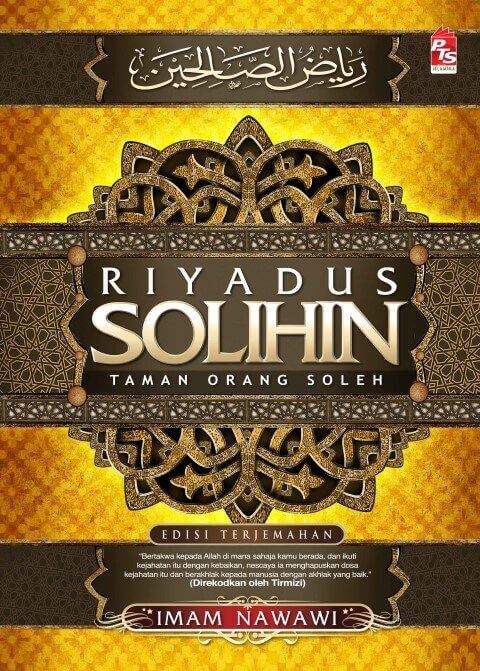CORRUPTION to genes passed down to the baby from his parents can cause a myriad of problems. Having that additional chromosome 13, 18 or 21 can make a whole of difference, writes DR ZILFALIL ALWI.
AFTER trying for almost three years, Aishah and her husband, Samad (not their real names), were thrilled to find out that she was pregnant.
However, their happiness was shortlived as the baby had gross deformities of the face and hands. The baby also has gross brain and heart defects and doctors told them it would not live long.
Blood test for chromosome analysis revealed an abnormality on chromosome 13, a condition called Trisomy 13 or Patau Syndrome.
Trisomy 13 is a condition in which a patient has three copies of chromosome 13 instead of the usual two.
This results in the body having 47 chromosomes instead of the usual 46.
A baby with Trisomy 13 has gross cranio-facial abnormalities. The middle part of the face and brain fails to develop resulting in an empty space.
| Plan your baby |
Other anomalies include mental and motor retardation, extra fingers and toes, a small head and low-set ears, heart defects, renal and intestinal anomalies.
Most Patau Syndrome cases result from the failure of chromosome 13 to segregate during cell division, a condition called non-disjunction.
Under normal circumstances, the chromosome 13 of a parent cell goes to two daughter cells after division, with each cell having a copy of the chromosome.
However, when both copies of the parent chromosome go to one daughter cell, this will result in a daughter cell with two chromosomes 13 while the other with no chromosome 13.
The cell with no chromosome 13 disintegrates while the other cell with two chromosomes 13, if fertilised, results in trisomy 13.
This error in cell division, known as nondisjunction, occurs as random event during the formation of the reproductive cells and is usually related to increasing maternal age.
Sometimes, in a small percentage of Patau Syndrome cases, only some of the body cells have an extra copy of chromosome 13, resulting in a mixed population of cells with a differing number of chromosomes; some cells with the normal total number of chromosomes as 46 and some with a total number of 47.
This condition is called mosaic Patau Syndrome. Patients with mosaic Patau Syndrome are identifiable by milder clinical features and normally live longer than those with the non-disjunction Patau Syndrome.
Patau Syndrome can also occur when part of chromosome 13 becomes attached to another chromosome (translocated) before or during conception.
Those affected by this condition have two full copies of chromosome 13 and the extra copy/material from chromosome 13 is attached to another chromosome.
This condition is called translocation type of Patau Syndrome.
The physical signs of the syndrome may differ from the typical Patau Syndrome. While Patau Syndrome due to non-disjunction and mosaicism are not inherited, translocation type of Patau Syndrome can be inherited.
An unaffected, apparently normal person - a carrier - can carry a rearrangement of genetic material between chromosome 13 and another chromosome.
This rearrangement is called balanced translocation because there is no extra material from chromosome 13.
Although they do not have signs of Patau Syndrome and appear healthy, people who carry this type of balanced translocation are at an increased risk of having children with the condition.
When they marry, fertilisation of the husband's sperm with the ovum carrying the balanced translocation will result in an offspring with Patau Syndrome.
The majority of embryos with trisomy 13 are spontaneously aborted. Of those surviving to term gestation, the overwhelming majority do not survive past one month of age.
Parents are counselled regarding the condition, the causes, the grave prognosis and the recurrence risks.
The recurrence risks for a non-carrier couple having another baby with Patau Syndrome is less than one per cent. This is less than that of Down Syndrome.
For non-carrier couple like Aishah and Samad, who had their chromosome studies done, this is good news as they want to try for another baby. However, for carriers of chromosome 13 translocation, the recurrence risks are higher.
Trisomy 18 and 21
While trisomy can occur with any of the non-sex chromosomes, only three trisomies can survive to term gestation - trisomies 13, 18 and the more widely known trisomy 21, or Down Syndrome.
Trisomy 18, or Edward Syndrome, is the next most common trisomy after Down Syndrome. The incidence of trisomy 18 is one in 3,000 compared to about one in 700 for Down Syndrome and one in 5,000 for Patau Syndrome.
Like trisomy 13, most of the trisomy 18 results from the failure of segregation of chromosome 18 into the daughter cells (non-disjunction).
Mosaic and translocation Edwards, like Patau Syndrome, occur in smaller percentage of cases.
The extra chromosome 18 causes the physical abnormalities seen in Edwards Syndrome.
The extra genetic material that is present in every cell in the body contains extra information, and this affects the ability to grow and develop normally.
Most organs and systems of the body, including the brain and heart, are affected resulting in gross developmental delays.
The survival rate for Patau and Edwards Syndromes is very low. The majority of those inflicted with the syndrome dies in utero and are aborted. Of those that survive to term, only a few will survive their first year of life.
Babies with Down Syndrome have a much longer survival rate. With good health care, social support and effective Early Intervention Programme (EIP), a child with Down Syndrome can live to adulthood and be part of a productive society.
Prenatal screening for trisomy
Various techniques have been employed for the prenatal screening for Trisomy 21 (Down Syndrome) and other trisomies.
One common prenatal screening approach involves the use of maternal age in combination with multiple serum marker analysis between 14 and 22 weeks of pregnancy.
Serum screening functions on the principle that levels of certain analytes in the maternal bloodstream are, on average, abnormal in a Down Syndrome pregnancy.
A risk result greater than a specified cut-off value warrants the option of prenatal diagnosis through genetic amniocentesis.
Another blood test for prenatal screening, called the Trisomy Profile, is performed between 15 and 21 weeks into pregnancy.
Three chemicals - alpha feto-protein (AFP), human chorionic gonadotropin (hCG) and unconjugated estriol (uE3) - are naturally produced by the foetus or the placenta and are always found in the maternal blood during pregnancy. The levels of these three chemicals are measured and compared with the amounts normally present during pregnancy.
The conditions screened for by the trisomy profile are Trisomy 21 (Down Syndrome), Trisomy 18 (Edward Syndrome) and neural tube defects.
Prenatal diagnosis
Substitute for prenatal diagnosis because screening does not give a diagnosis and may miss many of the hundreds of other types of chromosomal abnormalities, therefore falsely reassuring to some patients who still have an increased chromosomal abnormality risk due to age.
Once a high risk pregnancy is identified, for example, a high maternal age and an abnormal ultrasound appearance, appropriate counselling is provided.
Amniocentesis (withdrawal of amniotic fluid) and Chorionic Villus Sampling (CVS) are among the prenatal diagnostic technique employed for the diagnosis of chromosomal abnormalities.
However, amniocentesis and CVS have risks and are known to be associated with pregnancy loss.
Counselling the affected family about the risks and benefits of such screening and the need for prenatal diagnosis is important to provide a balanced discussion of related issues.
The issue of survival of an infant with trisomy and the estimates of potential life span are required for effective counselling.
Thus, when parents interpret the genetic threat, not just in terms of the mathematical odds involved but also in terms of quality of life of an affected infant, they would be able to make an informed decision.
* Dr Zilfalil is a Consultant Paediatrician & Clinical Geneticist.
Publication: NSUNT; Jul 22, 2007; Main Section; Page 42


















No comments :
Post a Comment